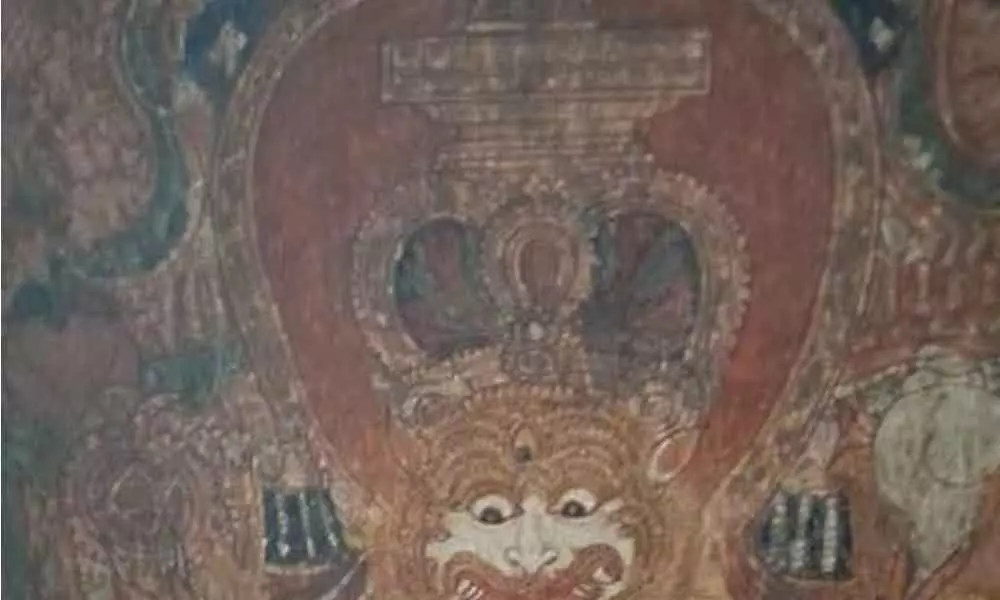Live
- Space X launches ISRO's communication satellite
- Sensex, Nifty rebound on value buying
- Eatala dares Revanth for debate on Cong 6Gs
- Modi strengthens global ties at Rio de Janeiro
- 55% share price fall costs Ola Electric investors Rs. 38K cr
- Banks report synchronised growth in credit, deposits
- PM Awas 2.0 launched
- Target Kohli’s body, his front pads to put him on back-foot: Healy’s advice to Oz quicks
- LIC accused of thrusting Hindi
- Will make Warangal a la Hyderabad
Just In
Murals At Thiruvattaru Adikesavaperumal Temple Are In Jeopardy Of Being Restored


Murals At Thiruvattaru Adikesavaperumal Temple
- The restoration and conservation of mural paintings, is in disarray afterwards when the work was halted due to public outcry.
- Following almost 400-year pause, the temple, one of the 108 Vaishnavite Divya desams, is being prepared for Kumbabishekam
Following almost 400-year pause, the temple, one of the 108 Vaishnavite Divya desams, is being prepared for Kumbabishekam, with the Hindu Religious and Charitable Endowments (HR&CE) department having accomplished 80% of the work.
However, the ambiguity surrounding mural restoration and conservation has made it difficult to set a date for kumbabhisekam.
Since Adikesavaperumal was the major god of the Royal family when they transferred their capital from Padmanabhapuram to Thiruvananthapuram, the populace demanded that the paintings be brightened and protested to Aswathi Thirunal Gouri Lakshmi Bayi, the princesses of Travancore.
Following his visit to the temple, J. Kumaragurubaran, Commissioner, HR&CE, tasked K.U. Krishnakumar, Principal and Chief Instructor of Guruvayur Devaswom Institute of Mural Paintings, with investigating the matter.
Mr Krishnakumar certified in his report dated September 27 that the restoration work was completed with care and commitment. Unnikrishnan, who has a lot of experience in this industry, did the repair work. He also attested that the work was completed according to the instructions of Veeraraghavan, a distinguished archaeologist and chemist with over 25 years of competence in traditional mural painting.
The style, beauty, and colour implementation of traditional Kerala Mural paintings can be seen in the temple, according to Mr Krishnakumar.
He had mentioned that the temple murals had a unique style and that restoration should be undertaken without changing it.
He also advised that a steel rail be erected around the walls at a distance away of two to two and a half feet to prevent worshippers from putting sandal paste and oil to the walls. An identical configuration could be created in the vicinity of Thiruvambadi Krishna temple's sanctum sanctorum.

© 2024 Hyderabad Media House Limited/The Hans India. All rights reserved. Powered by hocalwire.com






